
The 4th Minoan palace of Crete, which is the only one that was not looted. Built around 1600 BC it had 180 apartments and covered an area of 8,000m2. It is smaller than the other palaces but has a similar arrangement with the palaces of Knossos and Phaistos. It has a central courtyard around which the building is developed with labyrinthine layout, it has three western entrances and a main entrance where there is an altar. On the west side of the palace were the rooms for the dignitaries while in the northern side the banquet halls, the skylights and on the same side were large basins that had ritual character. The main apartments and the various workshops were on the eastern and southern side respectively. The location of the palace was important because they could trade with the East as well as the other palaces of the island.
The Gorge of the Dead is one of the most interesting gorges of Crete and is found at the end of the European path E4. It starts from the village Pano Zakros and ends at the beach of Kato Zakros. The name "Gorge of the Dead" was due to the Minoan graves found in caves in the cliffs, which are visible during the tour. The various geological formations create a fantastic scenery. The gorge is full of life and because of its natural beauty the Minoans believed that engraved there, they would continue their posthumous life in this place. It is passable in winter and summer. At the end, just before leaving the valley of Kato Zakros, climbing areas have been created for those who love sports.
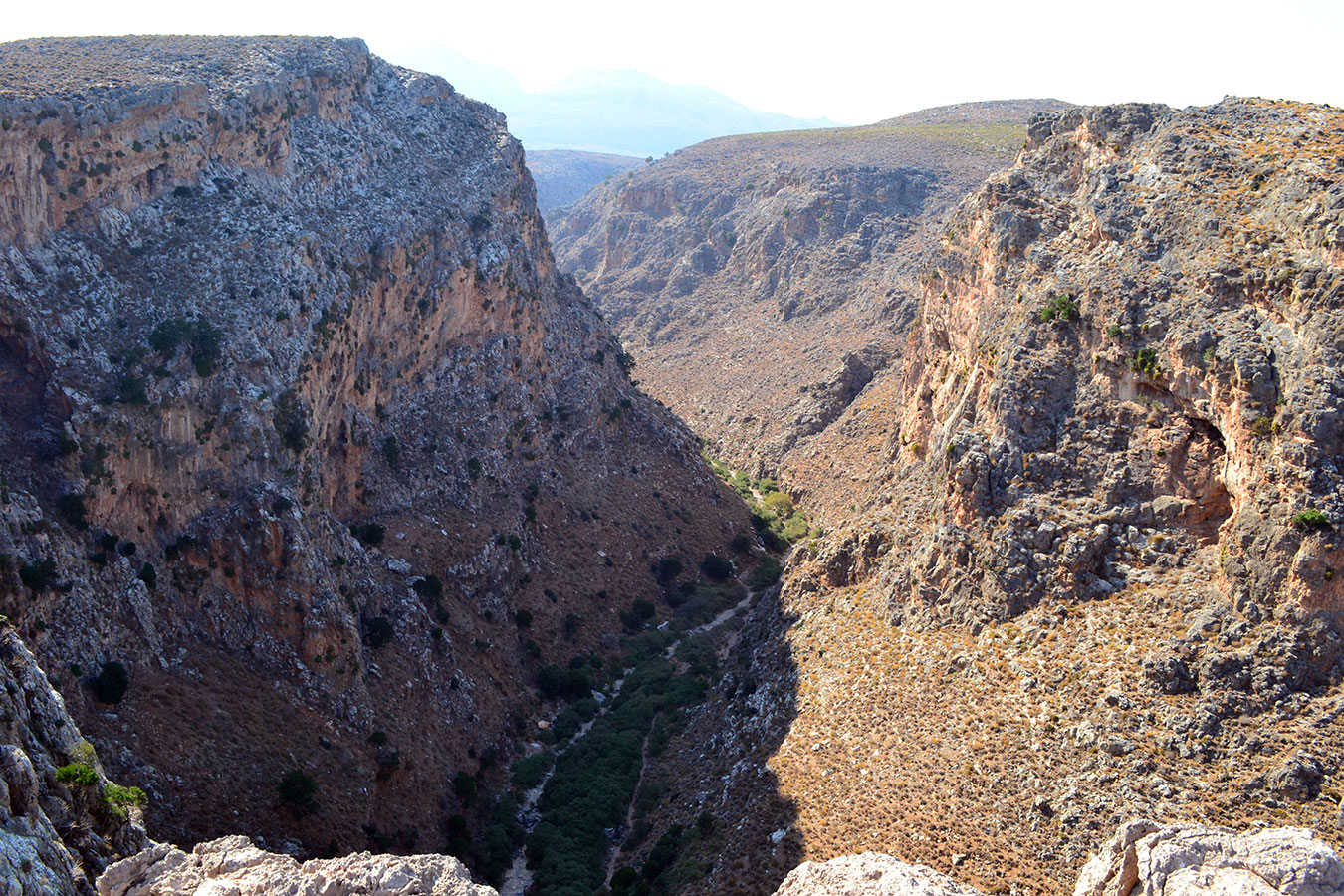
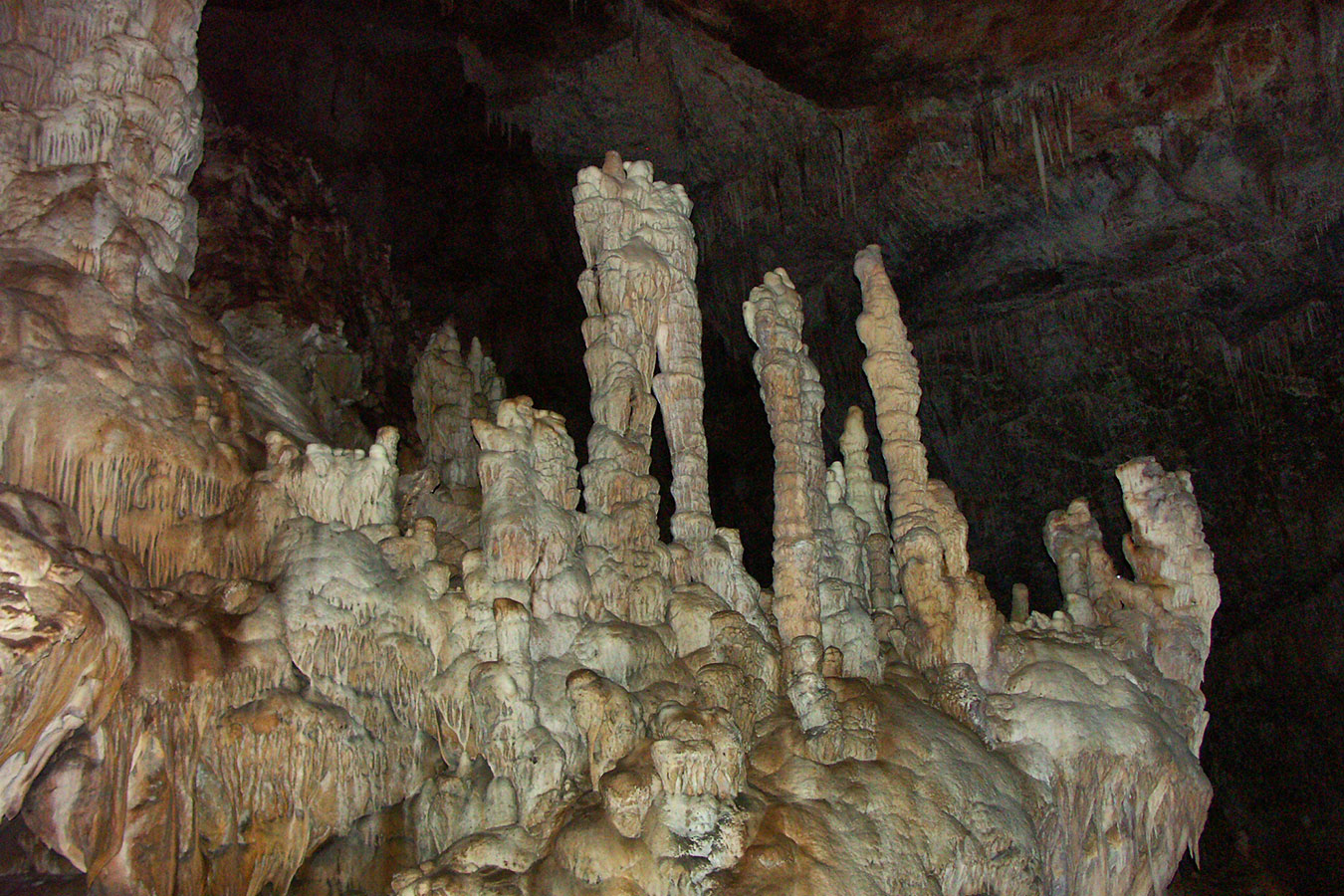
Special mention deserves the Cavern “PELEKITA”, one of the largest caverns at Crete. It is located 5 kilometers from Kato Zakros and it can be reached on foot or with a small boat. Its length is 310 meters and at the end there is a small lake with water and the excavations that had been done, have found human skeletons as well as traces from habitations from the Neolithic era. Near the cavern is an ancient limestone quarry (soft porous stone) and because of this the cavern took its name. The walls in the courtyard of the Minoan palace have been built from this limestone.
Spiliara is another cavern in the north side of the valley of Kato Zakros where the holy cavern of Minoans was located. You can visit it by car or even on foot, from the old road which connected Zakros and Kato Zakros before 1985, when the new road was made. It is a dirt road in a good condition that in some points is at the edge of the gorge, offering a magnificent view. Continuing your walk, do not forget to visit the water spring of Zakros, leaving for a while the wild beauty of Kato Zakros and taking a breath of freshness among the trees that shade the sources.
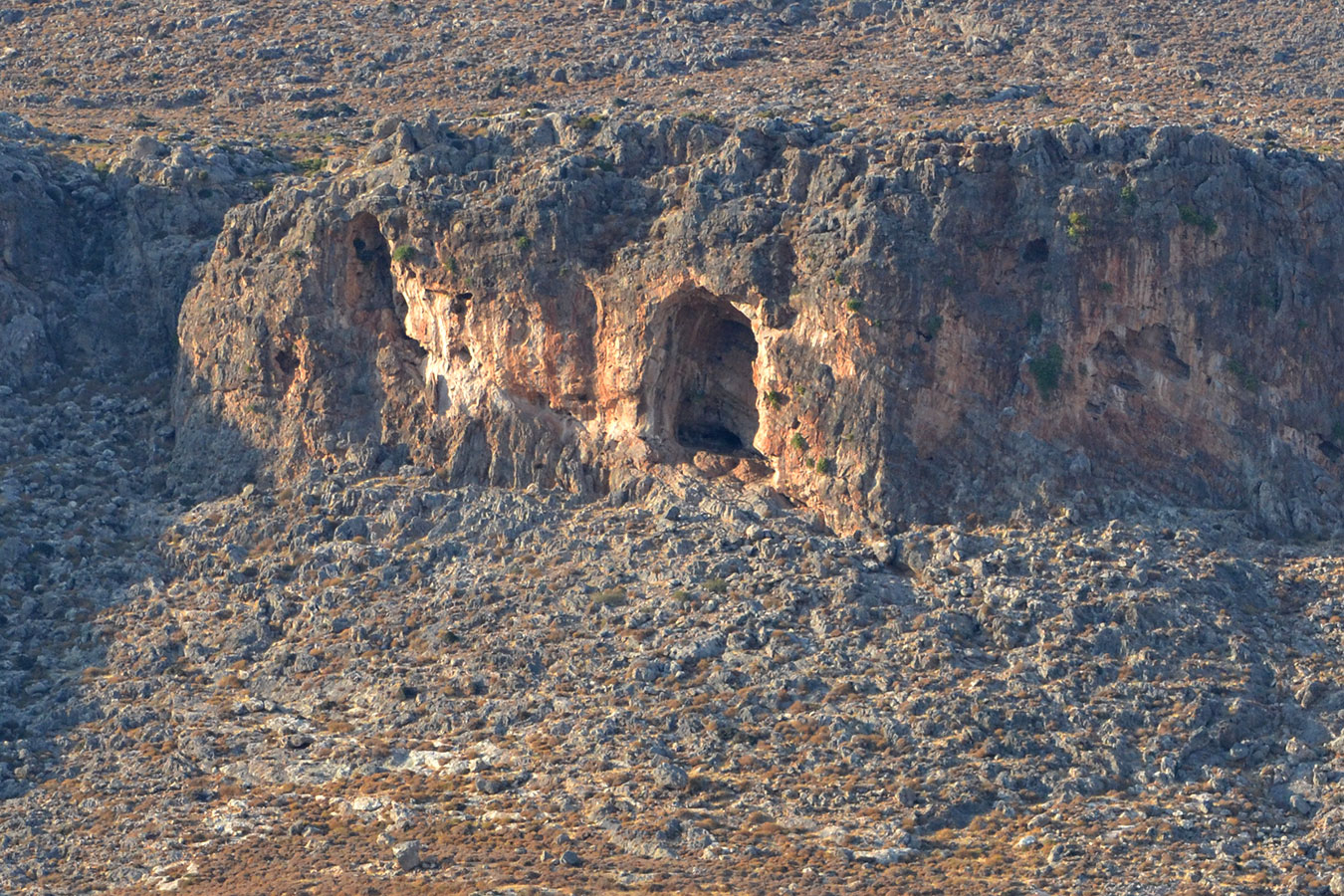
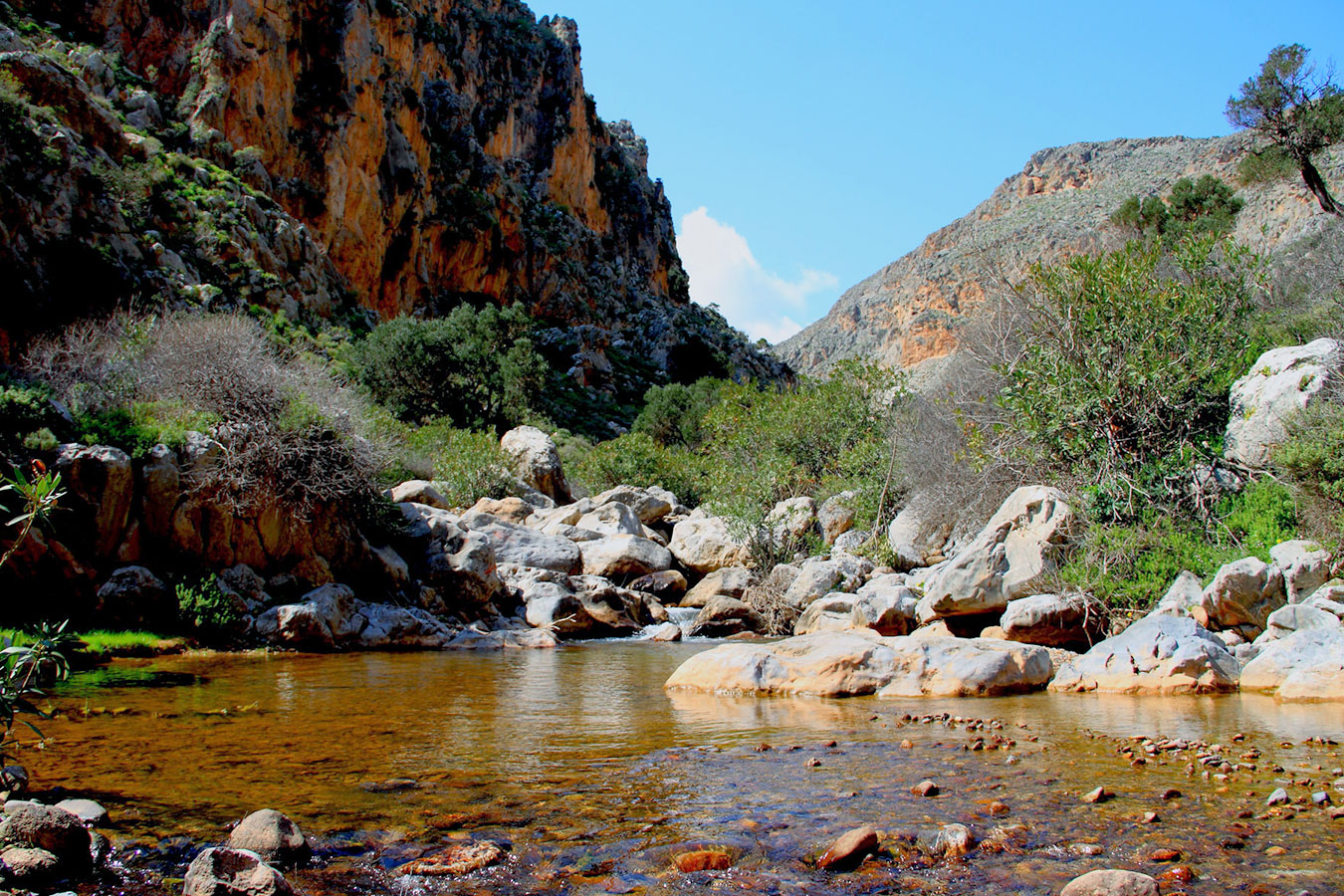
A small, easily accessible gorge, starts from the village Hohlakies and ends at the beautiful bay of Karoumes. The walk through the gorge, leading mainly through the riverbed, takes about two hours' time, starting from the village Hohlakies and another two hours' time for the return journey to Hohlakies. In springtime you must be prepared for some rock climbing in order to get round the pools of water. At the end is the lonely but beautiful beach of Karoumes where trees give shady resting places. This is actually the last part of the E4 European Long distance path in Crete.
The unique palm grove in Europe with its beautiful beach and crystal clear sea on the northern edge of the province over Cape Sidero, is a unique beauty corner of Cretan land. The palm trees here are native and their clusters cover most of the small ravine up to the sea. Apart from aesthetics, Vai also has a great biological value. The wetland created between the Palm Tree and the beach is important for bird life, while a vast wealth of marine life is developing in the sea.
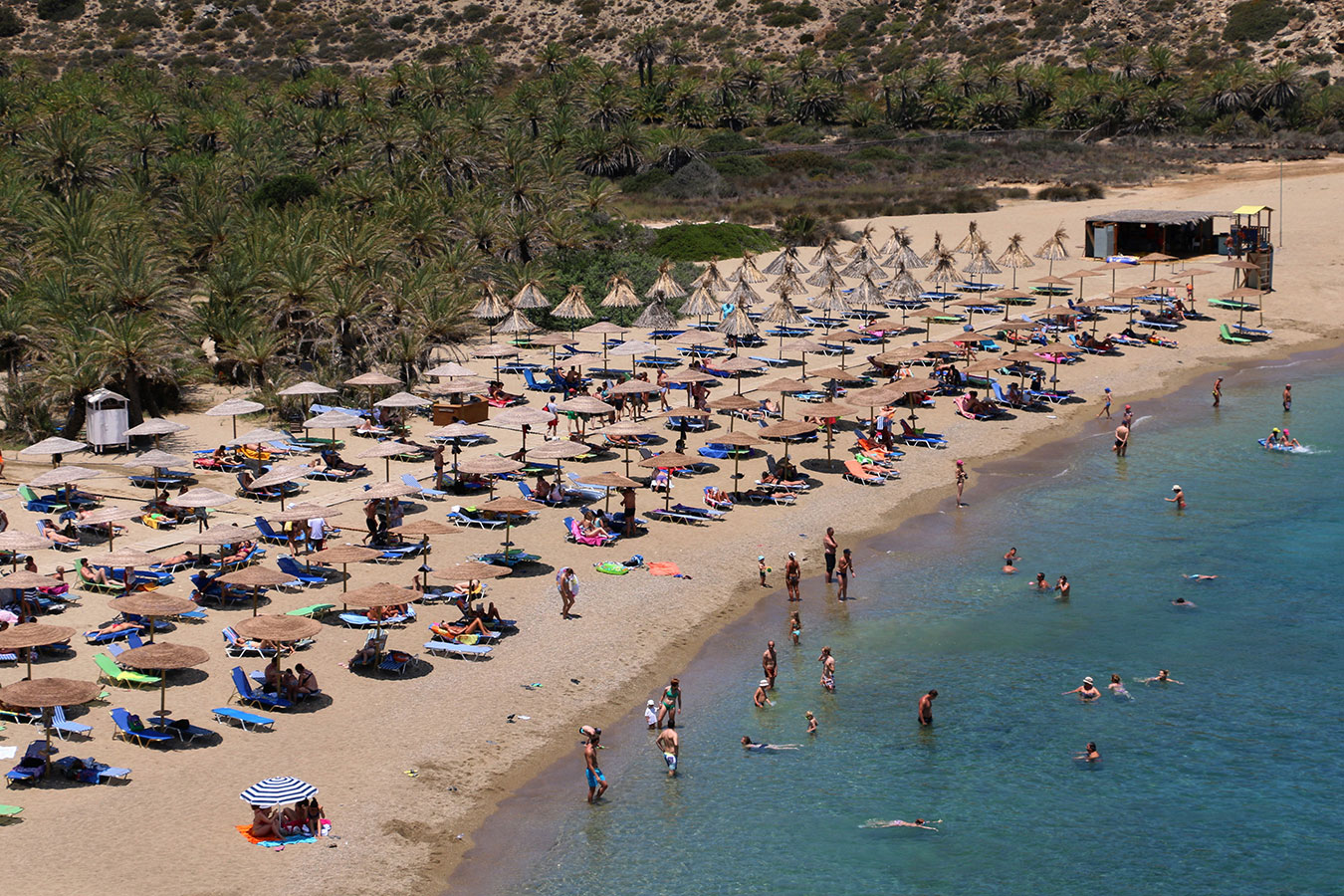
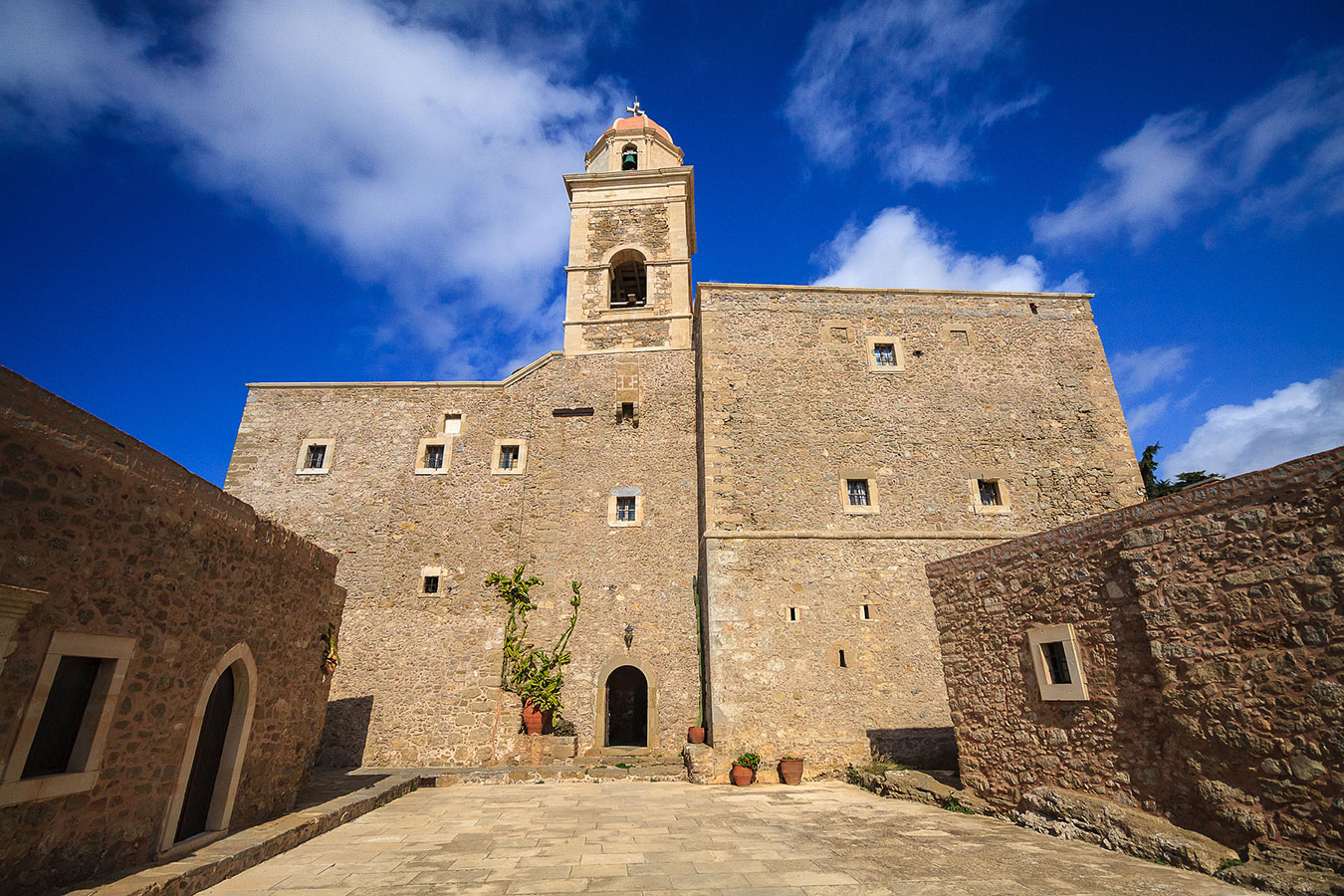
One of the most significant monasteries in Crete. It was founded around the mid 15th century, probably on the ruins of an earlier convent. The monastery was plundered by the knights of Malta in 1530 and shattered in 1612 by a strong earthquake. Due to its strategic position, the senate of the Republic of Venice, then ruler of Crete, decided to financially aid in rebuilding it. The monastery flourished until the surrender of eastern Crete to the Turks in 1646, after which it was abandoned for a long time. In 1704, it acquired special protection privileges from the Patriarch and was re-inhabited. After its monks were slaughtered by Turks in 1821 during the Greek Revolution of Independence, Toplou was again deserted until 1828. In 1866, during the massive Cretan revolt against the Turks, it was once again devastated. During the German occupation of 1941-44, Toplou was providing shelter to resistance fighters and housed their wireless radio. When this was discovered by the Germans, the abbot and two monks were tortured and executed.
The ancient Itanos was one of the strongest cities in Crete, especially during the Hellenistic and Greco-Roman times. The name comes from its founder Itanos, who came from Phoenicia. Its territory, during its peak, stretched from Cape Samonio (current Cape Sidero) to Cape Erythrae (current Cape Goudouras). The city flourished due to glass trade, fishing and trade of Tyrian purple, the red dye coming from shell extract. Koufonissi Island, which was owned by Itanos, was famous for the production of purple. Also, in Palekastro was located the temple of Diktaean Zeus, which brought big profits in the region. Today visitors can walk through the archaeological site and admire the various ruins such as the large tower on the western acropolis built by black stones, the large Christian church in the eastern citadel of the Hellenistic settlement, the two Early Christian churches at the foot of the hill that leads to Vai and the cemetery outside the town.
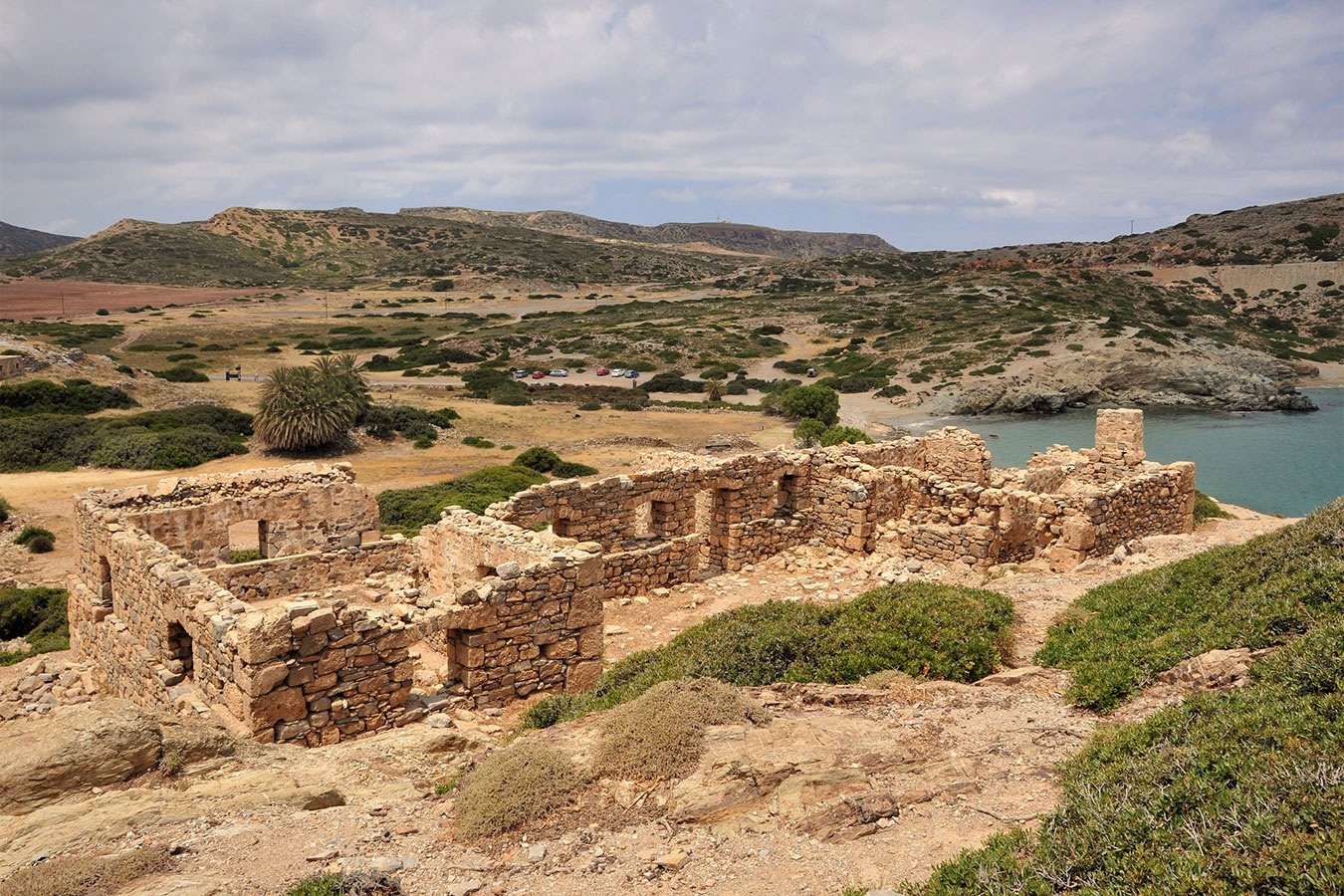
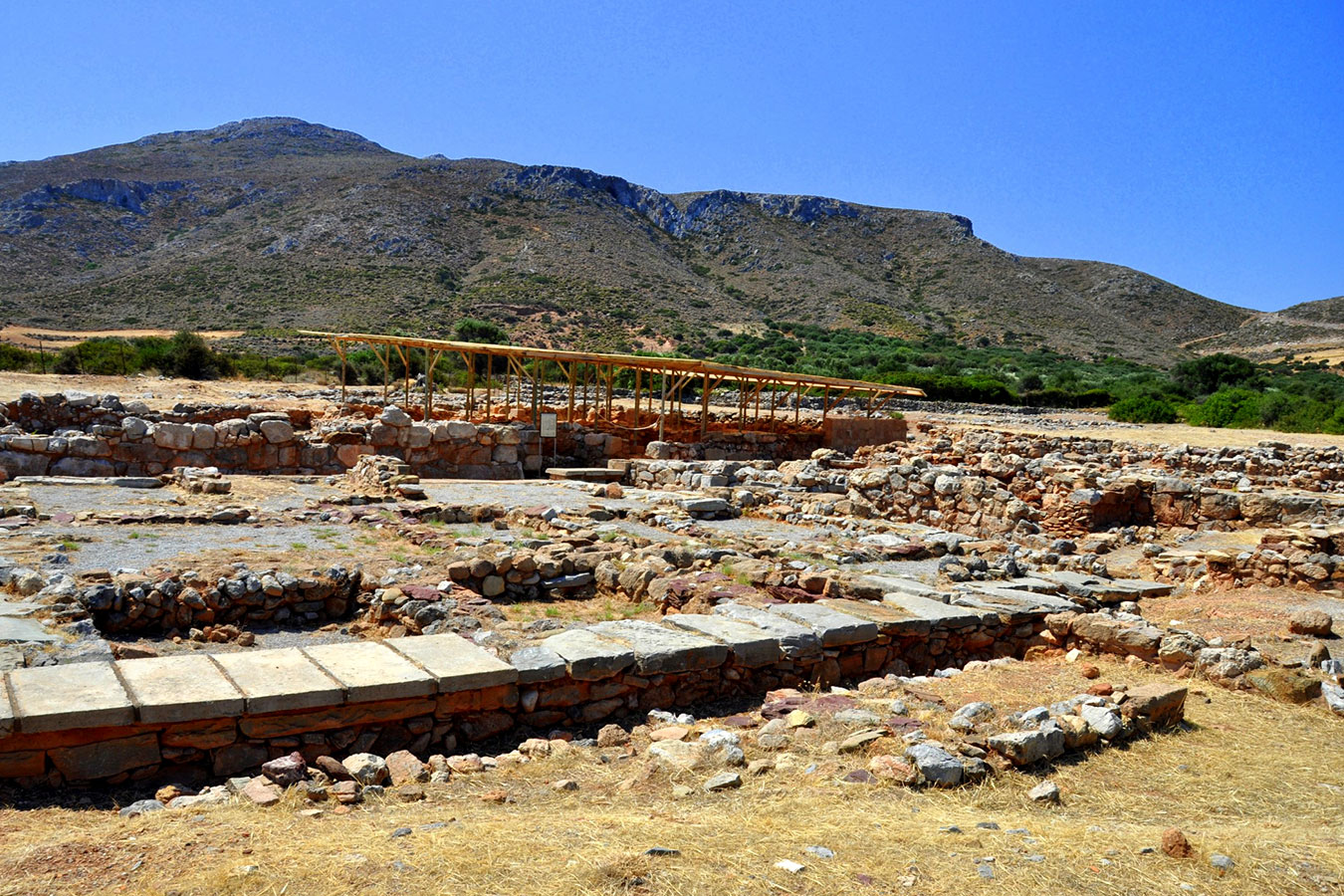
What we call "Palekastro" today is a Minoan town unearthed at the Rousolakos location near the modern town of Palekastro. It is located strategically at the East shore of Crete adjacent to the sheltered harbor of Chiona, a few kilometers North of the palace of Kato Zakros. The life of Minoan Palekastro came to an abrupt end in 1400 (or 1500) BC at the same time the other Minoan Palaces and towns, and while there is no conclusive evidence, the volcanic eruption of Thera, or foreign invasion, or a combination of the two appears as the most likely cause for the catastrophe. The ruins at the archaeological site that has been excavated must comprise a very small part of a vast settlement. One gets the feeling that the olive groves beyond the site itself hide a wealth of minoan secrets under their soil, and in fact, fragments of pottery along the beach, and large stones on the headland that frames the sandy beach to the South testify to the abundant existence of archaeological ruins and artifacts.
The settlement of Xerokampos is one of the most remote areas of the island. It can be accessed through the asphalt road coming from Zakros. In Xerokampos the landscape is arid and truly eerie, characterized by bare rocks and steep mountains. The vegetation is limited to bushes and there are some places with a few olive groves. Xerokampos is ideal for relaxing holidays and is not suggested for party animals. Xerokampos wild mountains are in direct contrast to the calm sea and the beautiful beaches. In a relatively small area you will actually find all types of beaches, as there are beaches with rocks, coarse pebbles, small pebbles, golden sand, white sand and turquoise waters, while there is also a beach with clay for lovers of natural spa!
